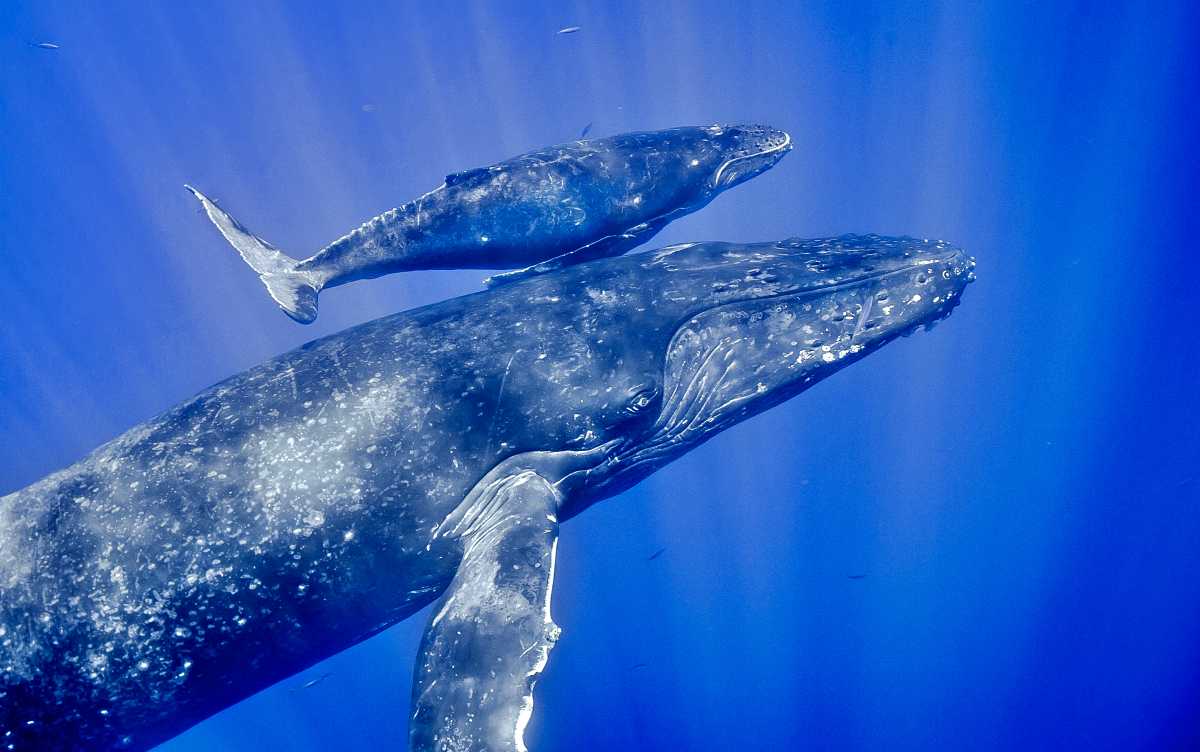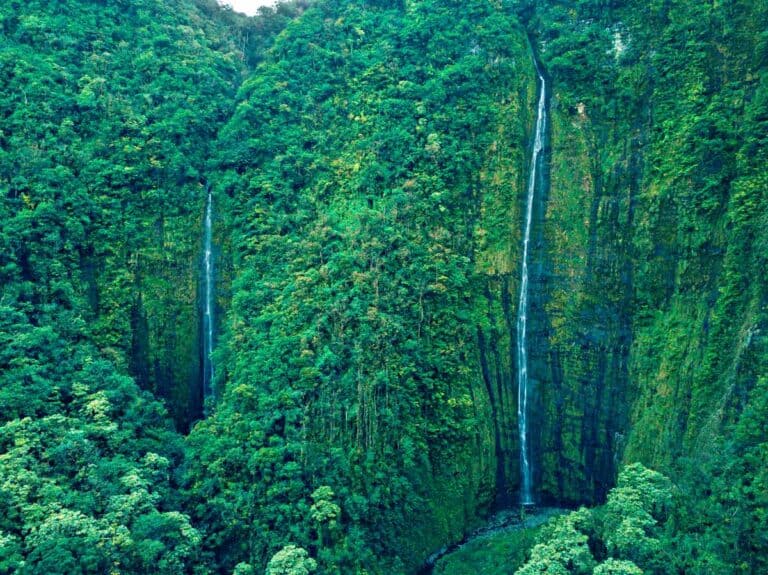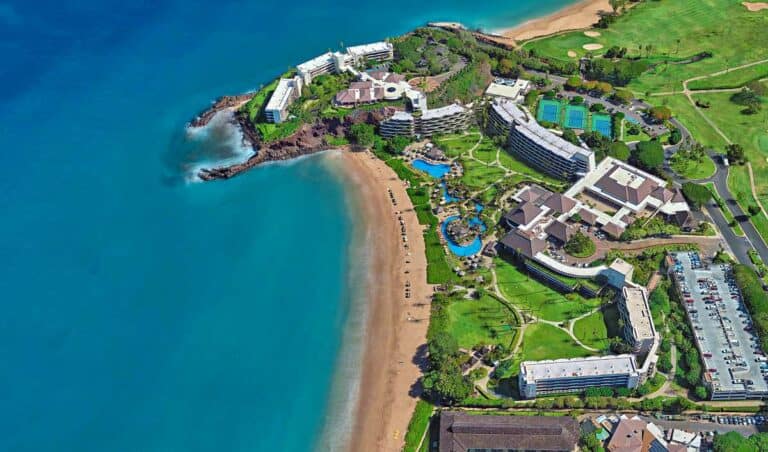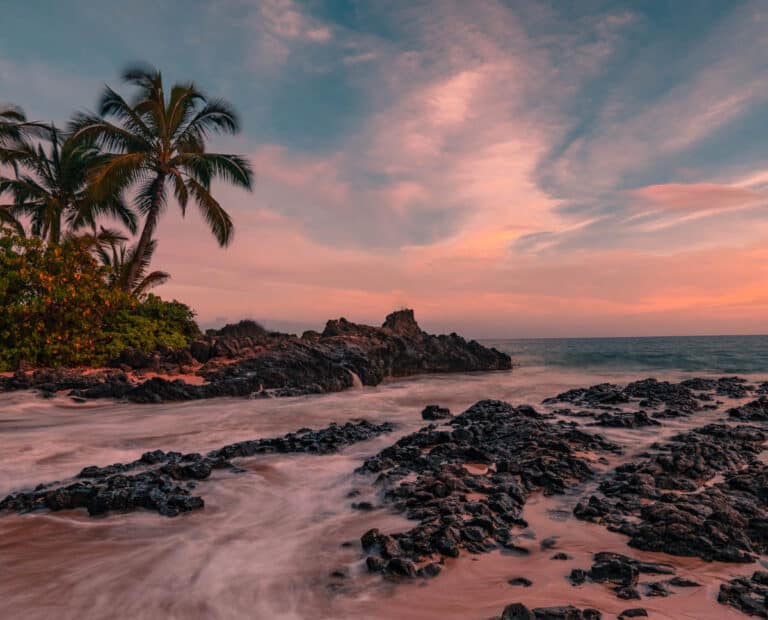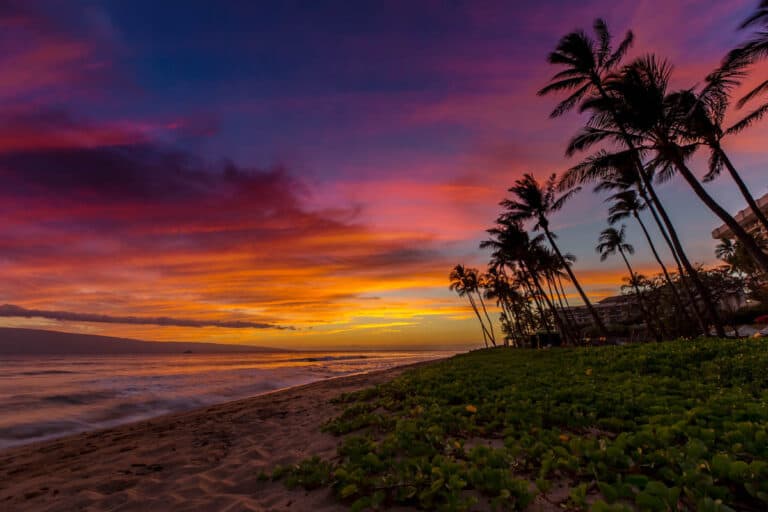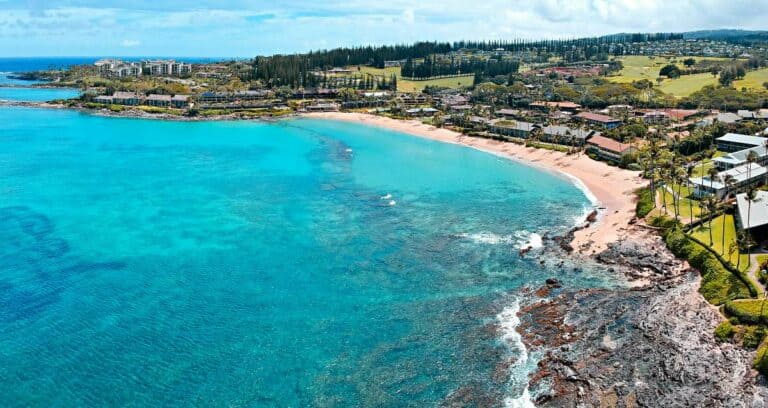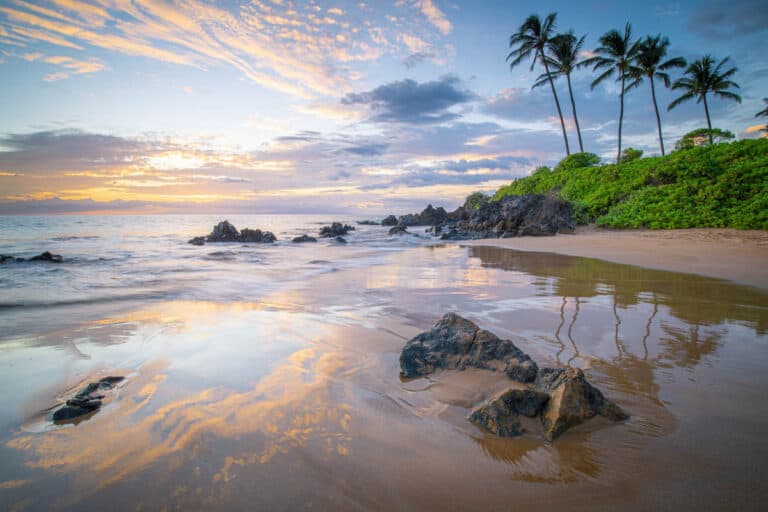9 Best Whale Watching In Maui (+ Best 2024 Tours)
Maui whale watching – the one item every Maui bucket list must have!
Watching a 40,000-pound, fully-grown Pacific humpback whale breach the surface of the water by propelling its full body completely into the air is truly amazing, a once-in-a-lifetime experience!
We took the eye-level, motorized, inflatable raft, whale watching tour in Maui, and gaped in awe as these giants erupted from the water around us. That was the highlight of our vacation, and, easily eclipsed every other experience!
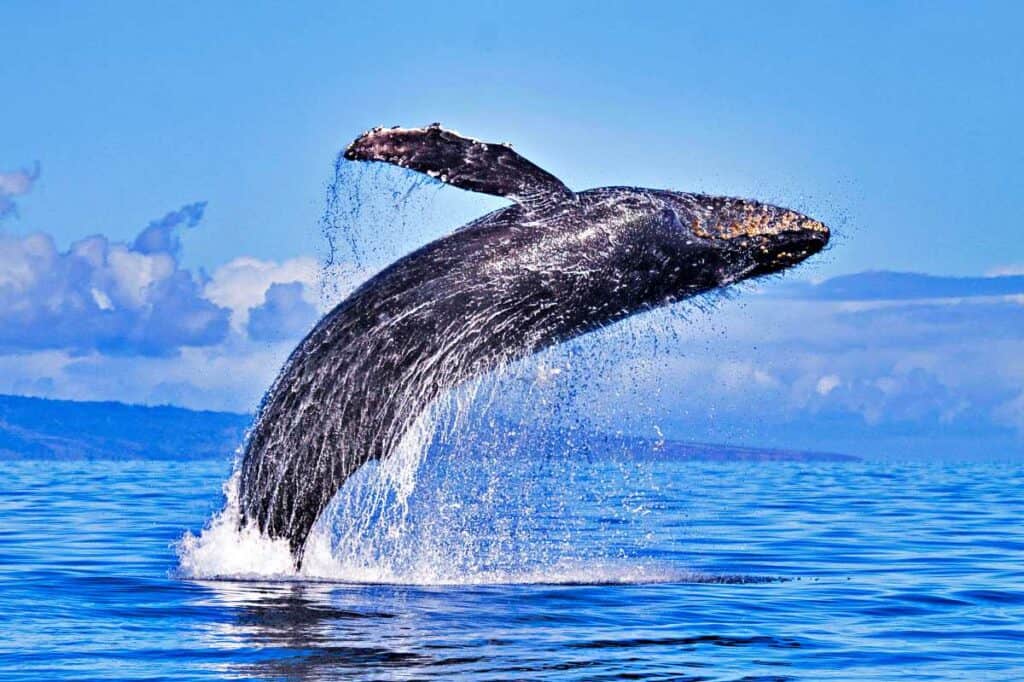
Whale watching in Maui is affordable with a whole slew of options.
Adrenaline seeker? You’ll love the exciting raft rides, and the incredible thrill of humpback whales breaching right beside you, and the thunderous sound as 40,000+ pound whales crash back into the ocean waters, sometimes drenching you!
Laid-back tourist? Take the luxury catamaran whale watching tour, sit comfortably on the deck, and sip your cocktails, while oohing and aahing as the whales perform!
Queasy stomach? Your best options are either a luxury catamaran whale watching tour if you think your stomach can handle it, or a beach chair at one of the best Maui whale watching locations below.
Whatever your needs and desires, we have the perfect Maui whale watching experience for you, read on! This is one Maui bucket list item you have to plan for, and will make your vacation a cherished memory!
Hey, by the way! Visiting Maui in the winter? While whale watching is probably at the top of your winter Maui itinerary, check out our travel guides for the best stops on the road to Hana, best things to do in Haleakala National Park and the best Maui hikes!
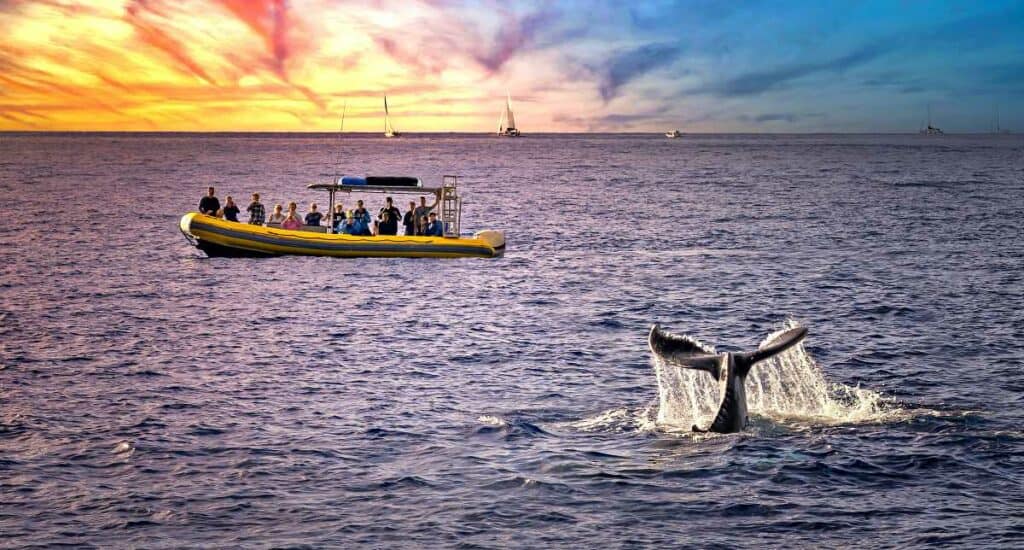
Some links on this page may be affiliate links. If you click an affiliate link and make a purchase, we may receive a small commission, at no extra cost to you. For more details, refer to our disclosure.
Whale Watching in Maui: The Basics
Looking for the best Maui whale watching tour? This super popular eye-level whale watching tour on a speedy eco-raft from Lahaina has over a thousand 5-star reviews on Viator!
The small-group, two-hour tour includes narration from a marine naturalist and hydrophones to listen to whale songs. Best suited for the adventure tourist!
>> Check price and availability on this thrilling, whale watching tour now!
And if you want a more sedate ride with free, unlimited open bar, consider this popular whale watching cruise from Ka’anapali Beach on a spacious catamaran.
You will board from the beach, and the tour includes a naturalist guide on board!
>> Check price and availability on this catamaran whale watching tour now!
Kinds of Whales in Hawaii
In the winter in Maui, humpback whales (more specifically, North Pacific humpback whales) are the most common species you’ll see, and they’re easily identifiable by their long pectoral fins, or flippers, and a huge tail called a fluke.
Other whales you might spot include pygmy whales, pilot whales, smaller with a round head, false killer whales, and spinner dolphins (yes, all dolphins are whales), known for their playful spins in the air.
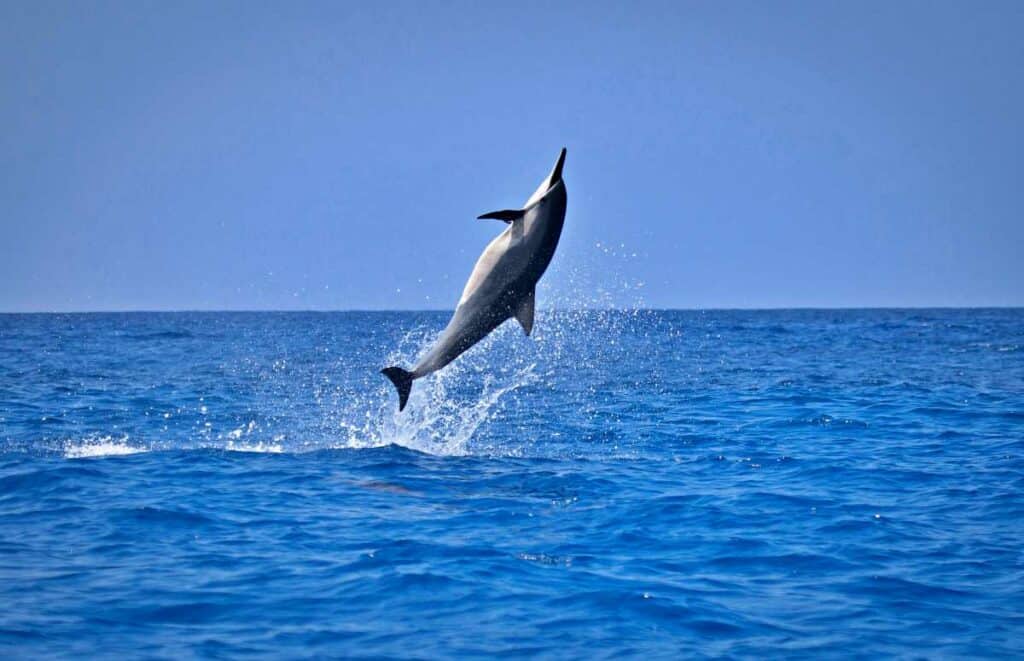
North Pacific Humpback Whales in Maui: Migratory Patterns
North Pacific humpback whales have a seasonal migration pattern, traveling thousands of miles from Alaska, their summer home and feeding grounds, to Hawaii, their winter home.
Wonder why whales choose Maui for their winter getaway? The warm waters of Hawaii are the perfect breeding grounds for humpback whales, and they come here to mate and give birth to their young ones.
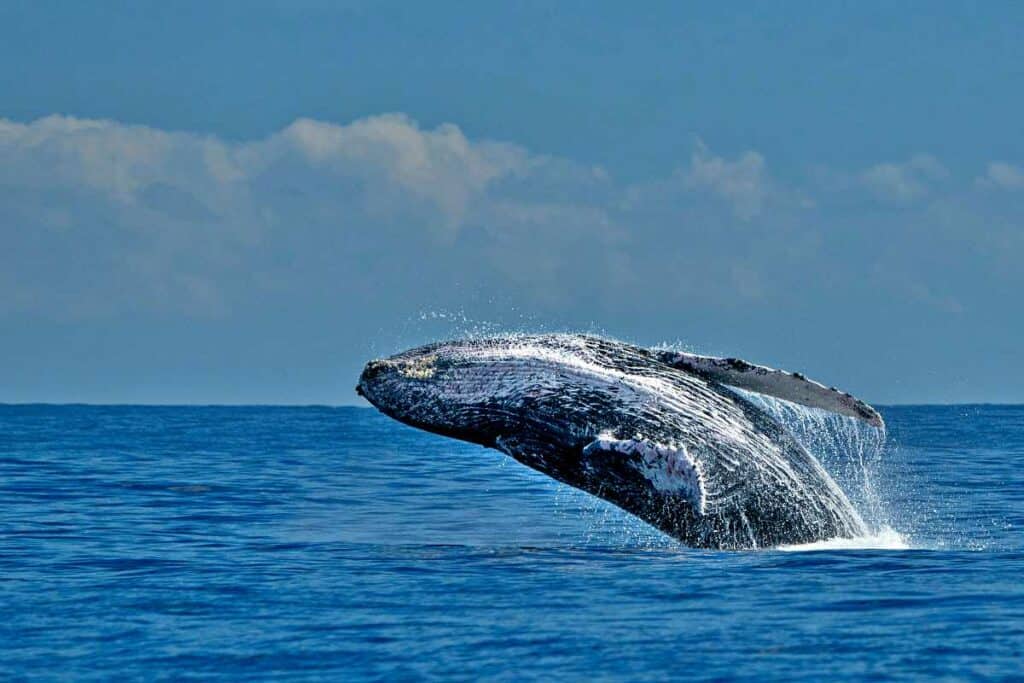
On our last visit Maui, we had the unique experience of seeing a new-born calf breaching in unison with its mother whale!
>> Book these 5-star rated, highly popular, Maui Tours now!
Best Maui Whale Watching Locations
With as many as 12,000 whales in the Hawaiian waters during the peak whale season (January to March), whale sightings are available from any of the Hawaiian islands.
The highest concentration of humpback whales are in two areas: the Maui Nui Basin and the Au’au Channel.
The Maui Nui Basin, the ocean waters between Maui, Lanai and Kaho’olawe, is a protected sanctuary for whales, and 6000+ whales end up in its warm and shallow waters for breeding every year.
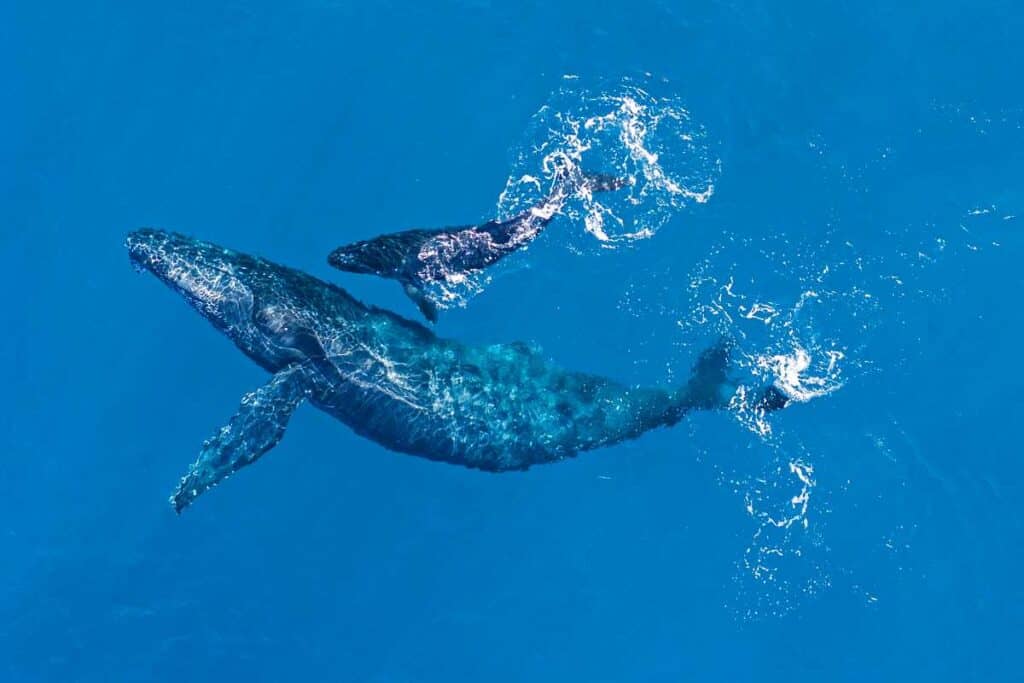
The shallow Au’au Channel, a stretch of ocean located between the islands of Maui, Lanai, and Molokai, is among the best whale watching places in the world!
The Au’au Channel is a highway for whales that provides warm waters, strong currents and ample, nutrient-rich food sources! The shallow, protected waters of the channel offer a safe haven for the whales to frolic and play.
No wonder Maui is the best Hawaiian island for whale watching!
Your best chance of seeing these incredible creatures up close will be from the west and south coasts of Maui along the Auau Channel and the Maui Nui Basin, such as Lahaina, Ka’anapali, and Maalaea.
These are the best places for the ultimate whale watch!
>> Book these 5-star rated, highly popular, Maui Tours now!
Maui Whale Watching Season
Best Time of Year for Whale Watching in Maui, HI
The best time of year for whale watching in Maui is winter, with the Maui whale watch season running from December to April!
In fact, whale watching is one of the top reasons to visit Maui in winter.
While the first whale may be seen as early as late November, the best month for Maui whale watching is definitely January, with the most recorded whale sightings!
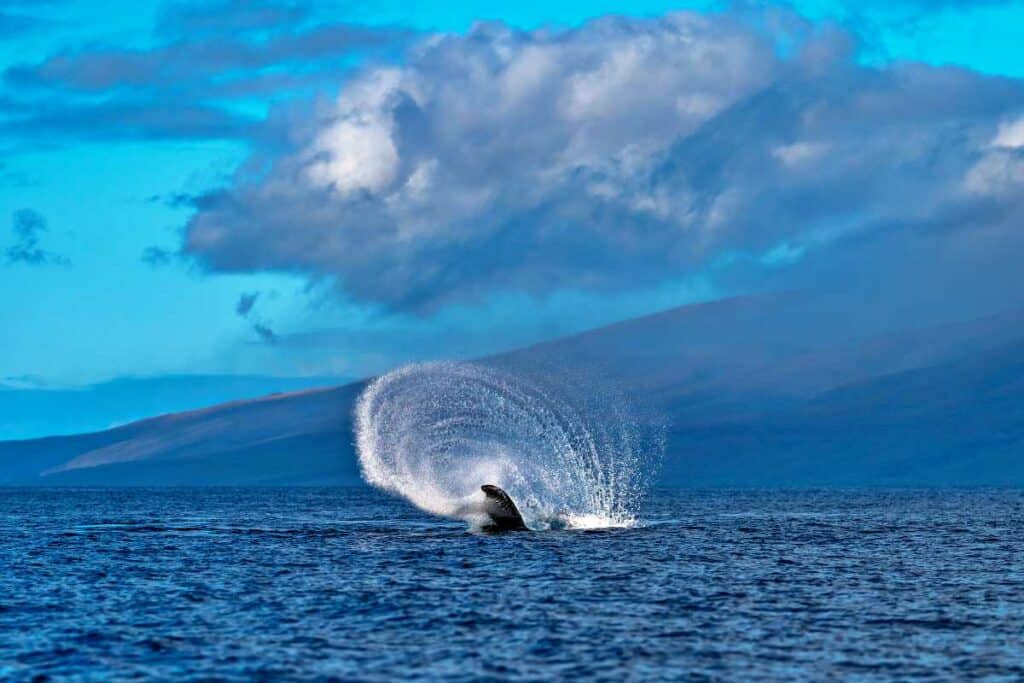
Best Time of Day for Maui Whale Watching
Unlike spinner dolphins, whales are active throughout the day. The best time of day for whale watching in Maui is the early morning, mainly because the weather is nicer, the ocean waters are calmer and the crowds are much less!
>> Book these 5-star rated, highly popular, Maui Tours now!
Best Maui Whale Watching Tours
While you can watch whales from the shore, to truly appreciate the amazing acrobatics of giant humpback whales, we strongly recommend getting a closer look from a whale watching boat tour!
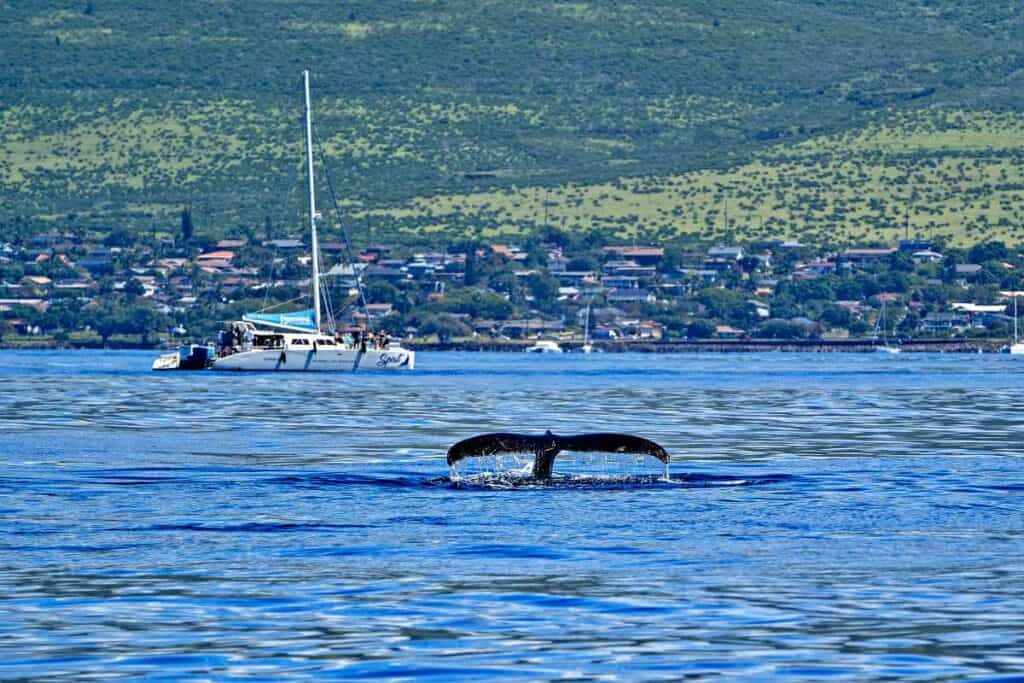
Most Maui whale watching tours have expert guides and / or marine biologists who can provide fascinating information on the humpback whales.
They can answer your questions and talk about any other marine life you may see (spinner dolphins, Hawaiian green sea turtles and tropical fish).
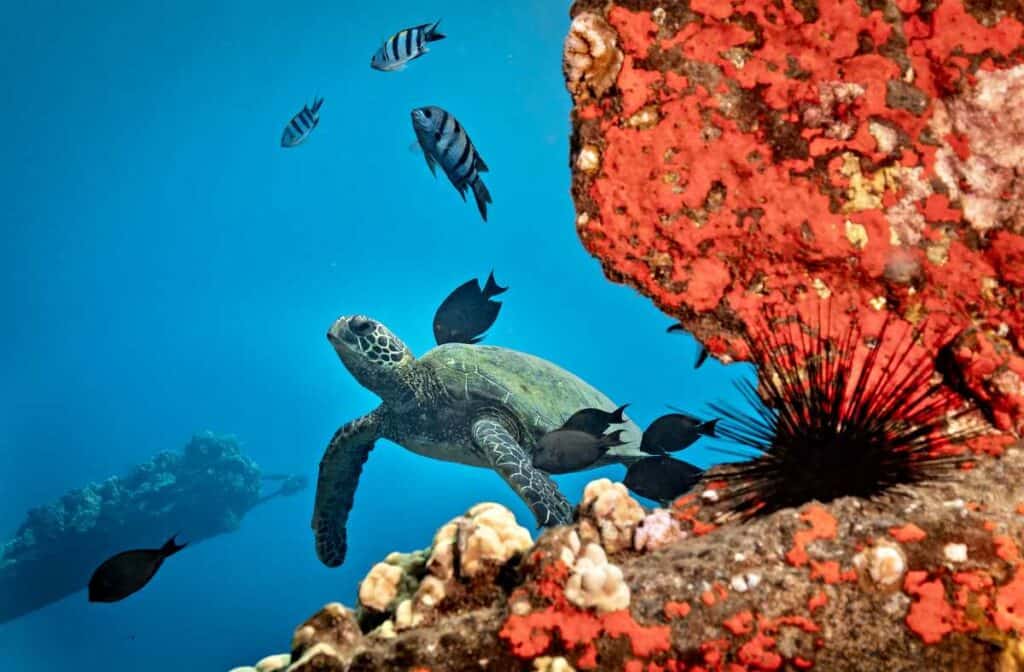
They also know the best spots to find the humpback whales in Maui!
During whale season, most tour operators offer whale-sighting guarantees, so try to book your tour early in your trip, in case you need to avail of this offer.
>> Check pricing and availability on this popular Maui whale watching tour now!
Kinds of Maui Whale Watching Tours
Want to ensure a great Maui whale watching experience? Understand all your options so you make the right choice!
What kind of vessel and group size do you want? You have a choice of catamarans, sailboats, inflatable motorized rafts, kayaks and outrigger canoes.
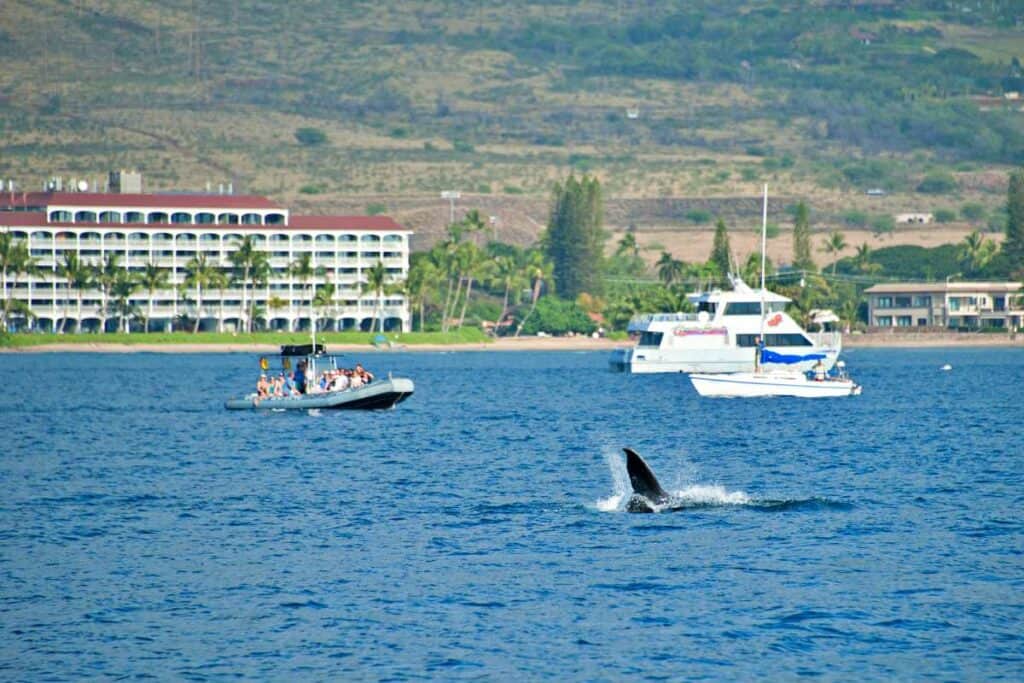
Catamarans and Bigger Boats
Catamarans, boats with two hulls and a wide deck, and larger boats cater to large groups (80+). These boats provide a smoother ride (very important if you have motion sickness!) and many have restrooms and other facilities (food and drinks) on board.
Some may even offer glass bottoms, a perfect option for you to see Hawaiian tropical fish if you don’t like snorkeling or getting wet!
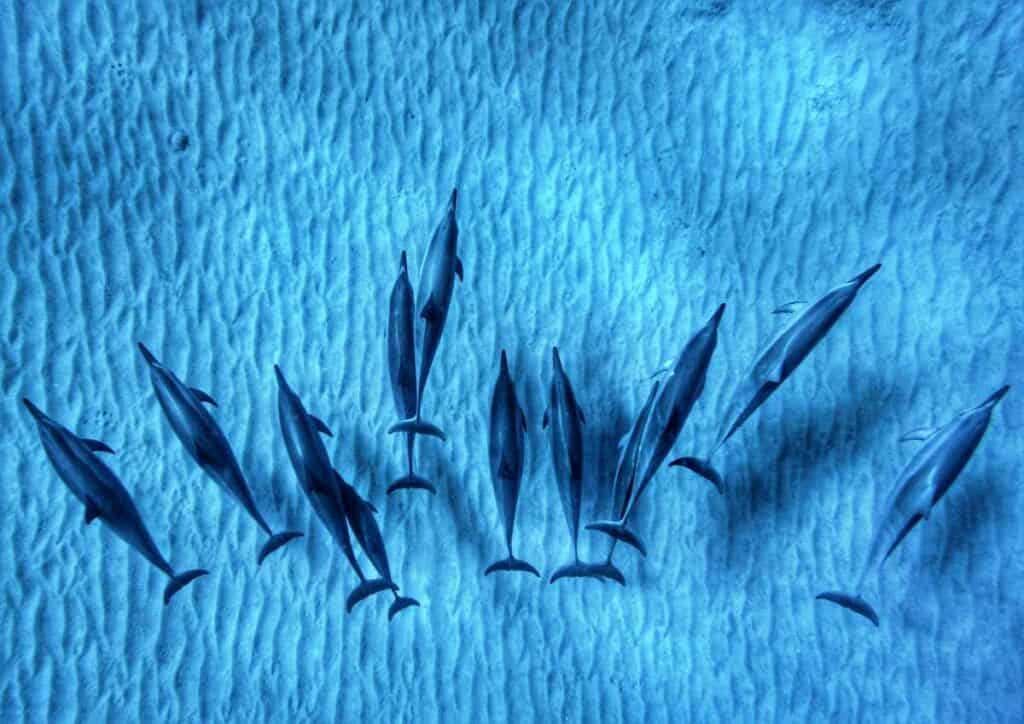
These tours are also usually much cheaper than the others.
Though sometimes crowded, the boat captains do a good job of making sure everyone on board gets to watch the whales by turning the boat.
Sailboats
Sailboats are smaller boats, but still provide a comfortable ride. They cater to small groups (less than 60) and a more intimate whale watching experience.
Many offer food and an open bar, glass bottoms, and restroom facilities.
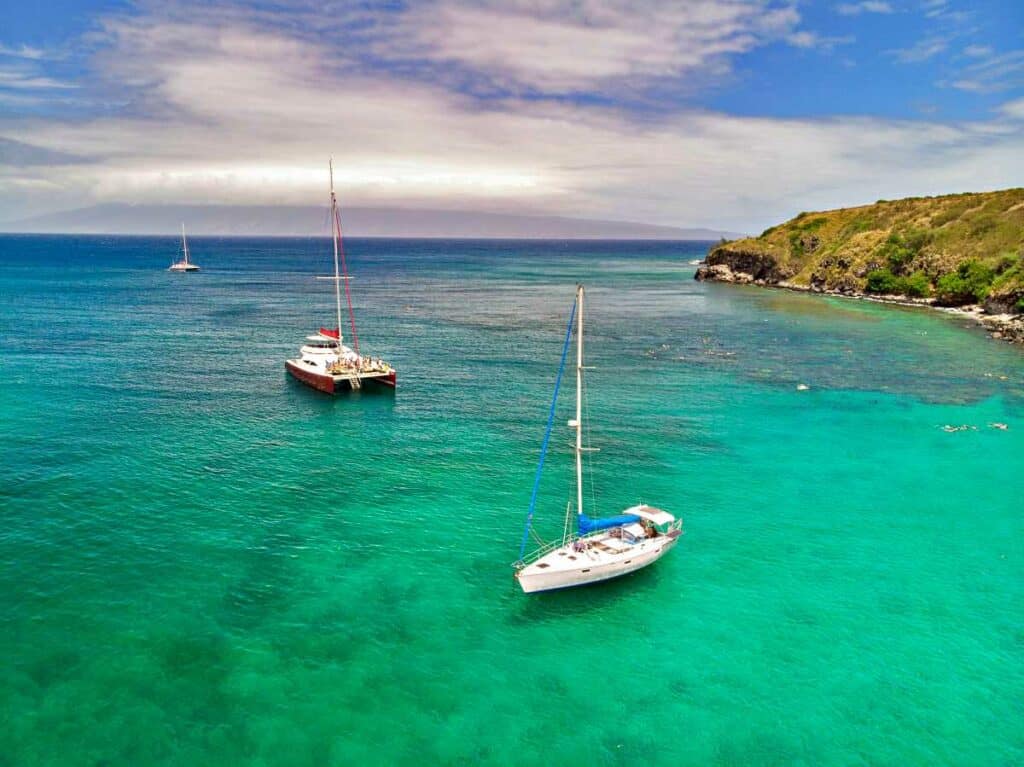
Rafts
Inflatable motorized rafts are speedy and low. They can get you quickly to nearby whale sightings and offer you a much better viewing perspective, being nearly at eye level with the water.
However, the rides, while thrilling, are often bumpy.
Kayaking and Outrigger Canoes
Kayaking and outrigger canoes (traditional Hawaiian transportation) are options for savvy, adventure-seeking visitors.
While your coverage of the ocean will be limited (to where you paddle and row), experienced guides will escort you to the best locations with the most recent whale sightings, and keep you at a safe distance.
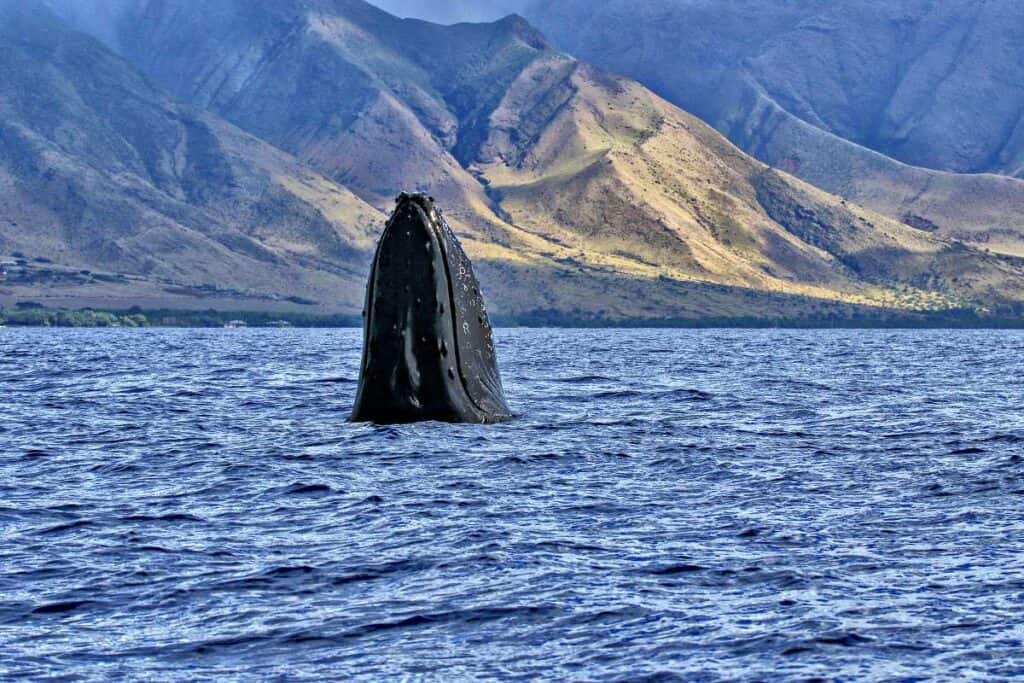
Our Favorites Among the Best Maui Whale Watching Tours
We (and our friends) have taken several of the Maui whale watching tours. We liked the inflatable rafts the best, and they provided a front row seat for spectacular humpback acrobatics!
I highly recommend the Eye-Level Whale Watching 2 Hour Eco-Raft Tour from Lahaina, Maui or similar tour.
Our friends took the Ultimate 2 Hour Small Group Whale Watch Tour from Lahaina Harbor and they loved it.
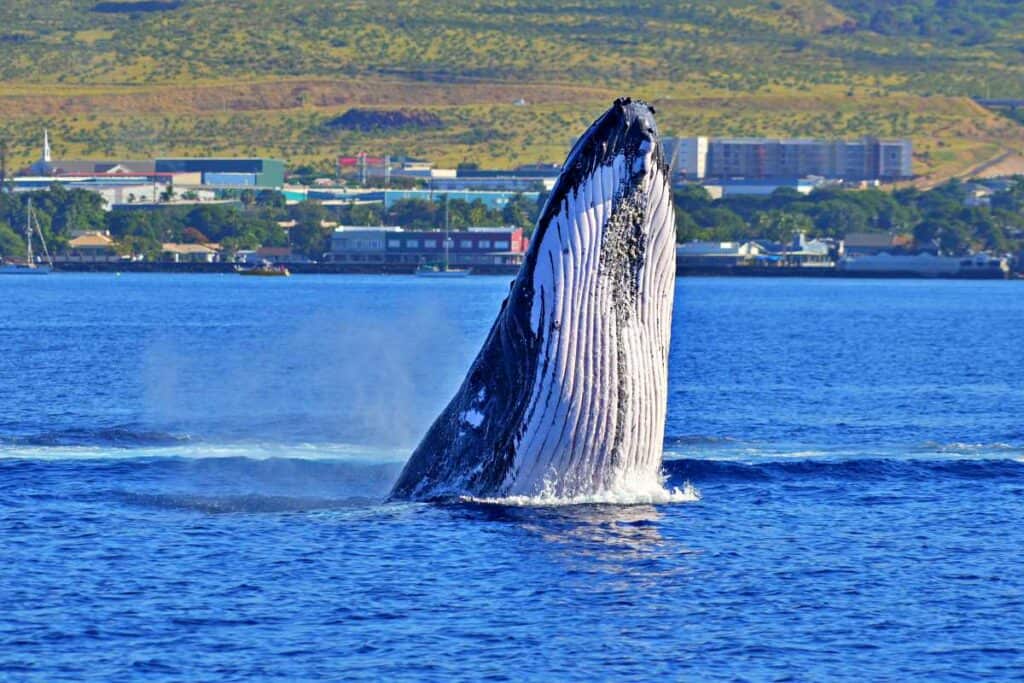
On our last trip we opted for a catamaran tour (one of the members in our party had a history of sea sickness). Our knowledgeable guides still managed to provide new whale information, despite all our earlier trips!
We liked the one we chose and highly recommend it to you: Whale Watching Cruise with Open Bar from Ka’anapali Beach.
Other well-reputed tour operators include the Pacific Whale Foundation Tours, the Pac-Whale Eco Adventures, Ultimate Whale Watching, Maui Adventure Tours and Redline Rafting.
Here are some of the best rated Maui whale watching boat tours:
Prefer tours that start from the west coast of Maui (like Lahaina Harbor, Maalaea Harbor, and Ka’anapali Beach) – you reach the Au’au Channel and the Maui Nui Basin much quicker!
How Much does Whale Watching in Maui Cost?
Whale watching in Maui can cost anywhere from around $50 for the larger tours with discounts and/or deals to $100+ for the smaller groups.
In our opinion, Maui whale watching tours are definitely worth the price!
And don’t forget, you may be able to combine whale watching with snorkeling!
Learn more about snorkeling in Lahaina and West Maui!
9 Best Whale Watching in Maui (From the Shore)
Don’t want to take a boat tour? There are so many humpback whales in Maui in winter, you can easily spot some from the shore!
Let’s explore the best Maui whale watching spots (big hint: they all overlook the Maui Nui Basin and the Au’au Channel).
The below map shows the locations of the 9 best places for whale watching in Maui from the shore.
1. Lahaina Harbor
Lahaina Harbor, located on the west side of Maui, is our favorite spot for whale watching because it directly overlooks Maui Nui Basin, the whale sanctuary, and the Au’au Channel.
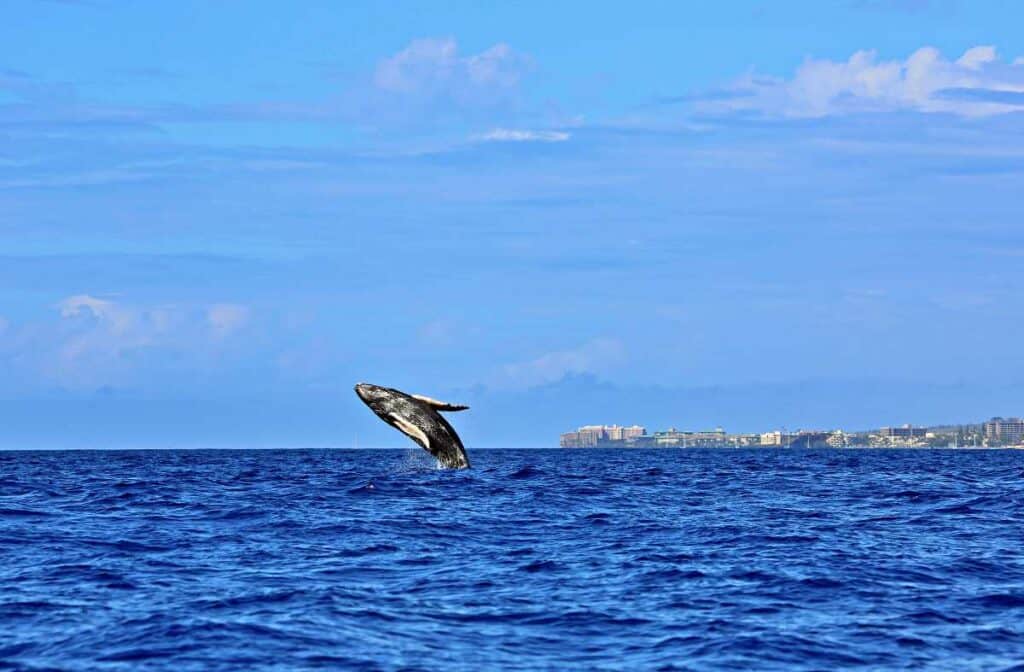
We had an unforgettable experience here of watching a calf gloriously breaching with its mother!
2. Ka’anapali Beach
This beautiful beach, north of Lahaina Harbor, is the next best spot, again, because it is right next to Maui Nui Basin and the Au’au Channel.
Grab a beach chair, sit back, and enjoy the stunning views of the ocean. Keep your eyes peeled for blows and breaches.

3. Kapalua Bay
Located north of Ka’anapali, Kapalua Bay is another fantastic spot to spot whales. Take a leisurely stroll along the beach and find a comfortable spot to observe these giants frolicking in the water.
4. McGregor Point Lookout
McGregor Point Lookout, high up on a cliff, off the Honoapiilani Highway, offers panoramic views of the ocean and is an excellent vantage point for spotting breaching whales.
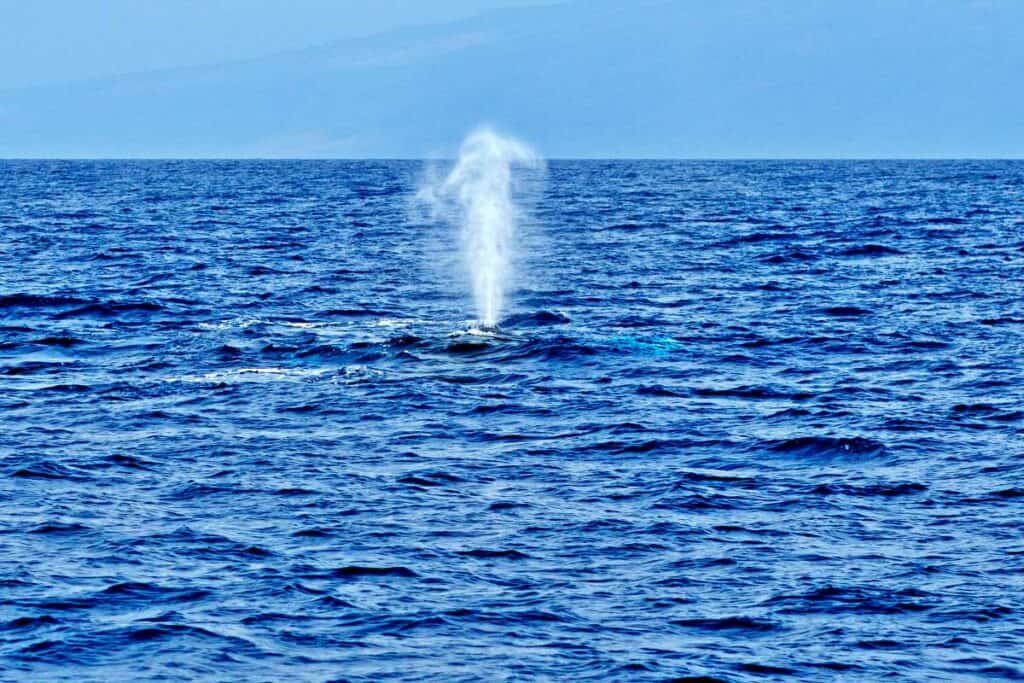
5. Honolua Bay
On the northwest coast of Maui, Honolua Bay is a beautiful bay that has open ocean areas.
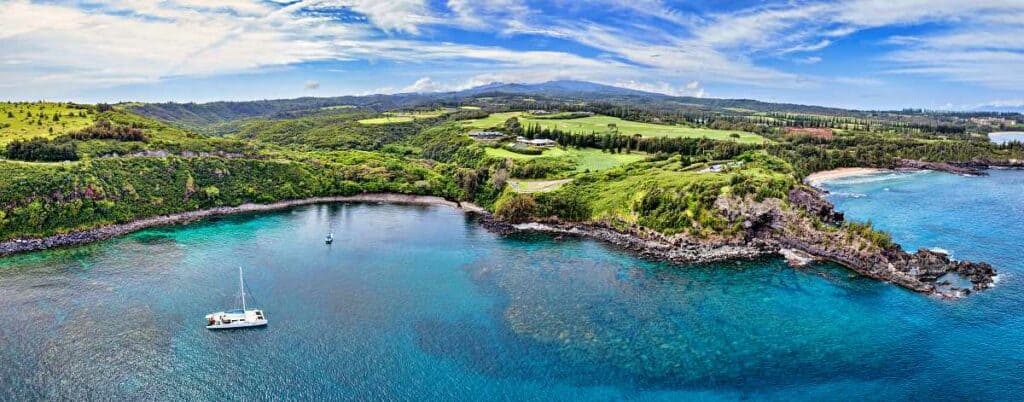
6. Olowalu
On the west coast, a few miles south of Lahaina, lies Olowalu, a secluded beach that offers a peaceful setting for whale watching.
7. Maalaea Harbor
An excellent vantage point overlooking the Au’au channel on the south-central coast of Maui.

8. Wailea Coastal Beach Path
On the south coast of Maui, the Wailea Beach Path, a beautiful, 3-mile, easy walk from Andaz Maui to the Polo Beach Club / Fairmont Kea Lani, provides a picturesque setting for whale watching.
9. Hawaiian Islands Humpback Whale National Marine Sanctuary Visitor Center
Stop by the Visitor Center of the Hawaiian Islands Humpback Whale National Marine Sanctuary in Kihei on the south shore of Maui to learn all about the whales and watch them from the observation deck.
Learn more about snorkeling in Lahaina and West Maui!
Whale Behavior Patterns
Whales have fascinating behavioral patterns through which they communicate – let’s talk about what to watch for!
Spy hopping is when a whale pokes its head out of the water, just like you would if you wanted to peek at something above the surface.
Breaching is when a whale propels its huge body out of the water and comes crashing back down with a big splash! It’s like they’re doing a magnificent belly flop! It’s spectacular!
A blow is the spout of water and mist that shoots up into the air when a whale exhales through its blowhole. It’s like a whale’s way of blowing its nose.
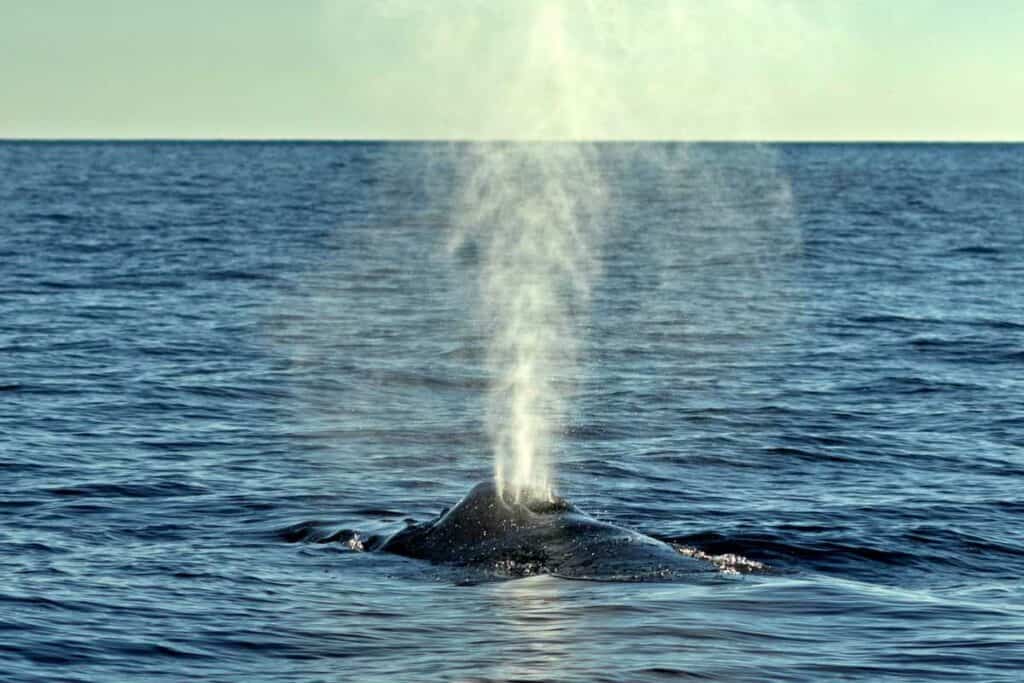
Whales use their pectoral fins, or flippers, to make a big splash on the water’s surface, and this behavior is called pec slapping.
Tail slapping is when whales lift their massive tails out of the water and slap them on the surface to create a loud noise and a big splash!
Scientists think tail slapping and pec slapping are ways to communicate with other whales or to scare away predators.
When a whale is ready to go for a deep dive, they show you their magnificent fluke, which is their tail.
They lift their tail out of the water and gracefully disappear beneath the surface. It’s like waving goodbye, and they likely won’t re-appear for some time!
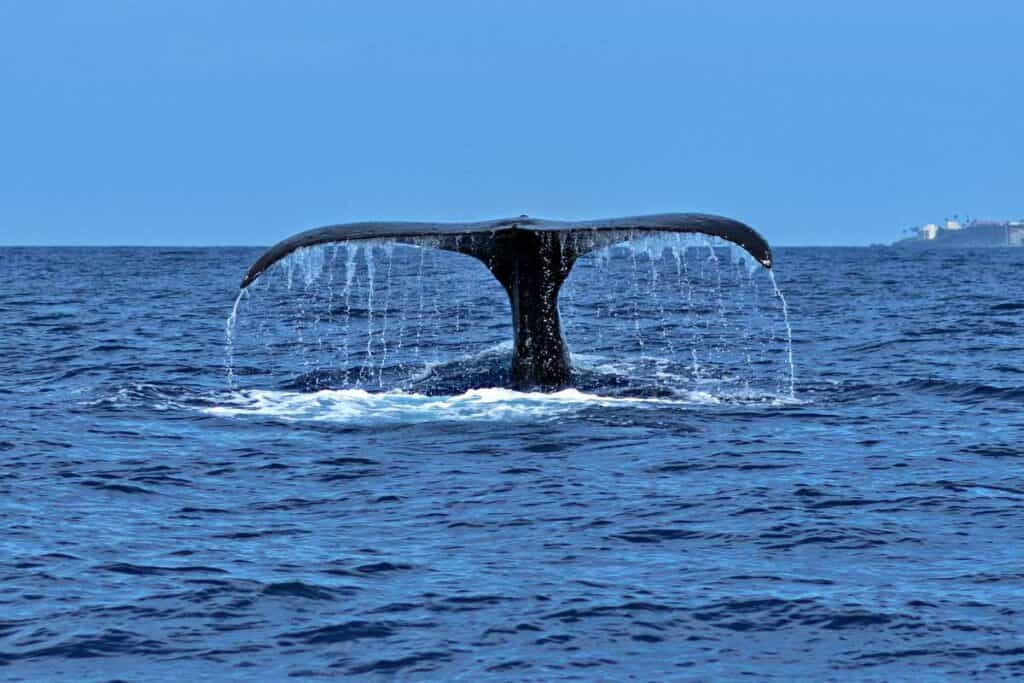
What’s truly mesmerizing about whales is their ability to sing!
Male humpback whales are known for their beautiful songs, consisting of moans, cries, and squeaks, and can last for minutes or even hours.
Scientists believe that male humpbacks sing to attract a mate or to communicate with other whales.
On your whale watching in Maui, keep your eyes peeled for spy hopping, breaching, blows, pec slapping, tail slapping, fluke dives, and listen carefully for the magical whale songs.
Tips for Maui Whale Watching Tour
If you’re going on a Maui whale watching tour, here are some helpful tips to make your experience even more awesome!
- Hydrophones: Listening to the male whales singing their beautiful songs is an unforgettable experience so definitely use the complimentary hydrophones many tours provide.
- Reef safe sunscreen: Use sunscreen and a hat to protect against Maui’s strong sun.
- Sea sickness medication: Take or pack sea sickness medication. If you feel nauseous, stay above deck and look straight ahead to the horizon.
- Binoculars: Keep binoculars and zoom lenses handy.
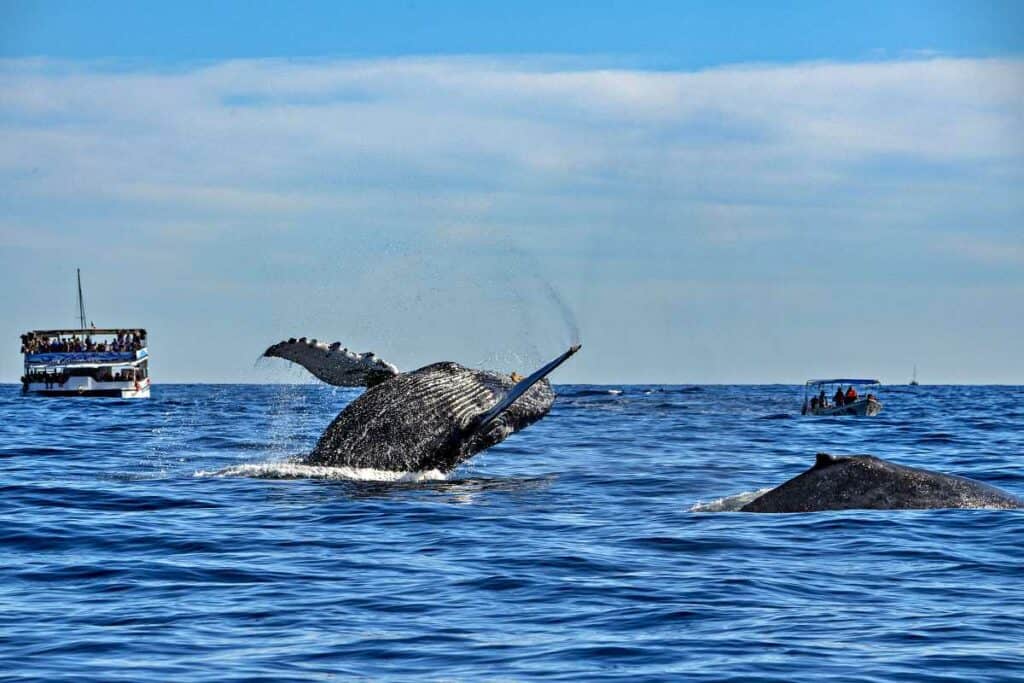
- Water and snacks: Stay hydrated during the trip.
- Towel: A towel is useful if you get splashed.
Whale Watching in Maui FAQ
Is whale watching in Maui worth it?
Absolutely. Given the migration pattern of the humpback whales, Maui is one of the best spots in the world to watch these gentle giants frolicking with their calves!
Which is the best Hawaiian island for whale watching?
Maui is the best Hawaiian island for whale watching, with its close proximity to Maui Nui Basin and the Au’au Channel, two places that have the highest density of whales in the Hawaiian waters.
Check pricing and availability on this popular Maui whale watching tour now!
When is the whale season in Maui?
Whale season in Maui is in the winter months, with peak whale season in January and February.
Which is the best month for whale watching in Hawaii?
The best month for whale watching in Maui and Hawaii is January, with the highest recorded whale sightings.
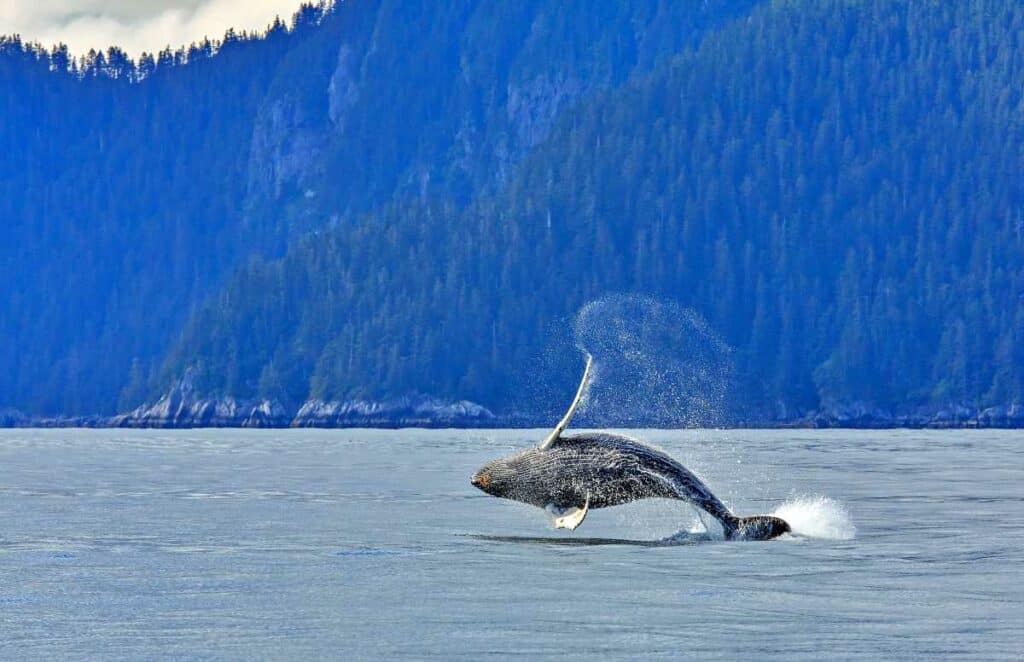
What is the best time of day for whale watching in Maui?
Early morning is cooler and less crowded. The light in the early afternoon is best for seeing below the surface of the water for underwater whales.
The golden hours are great for photography.
What part of Maui is best for whale watching?
The best whale watching in Maui is on the west side of Maui: the Maui Nui Basin and the Au’au channel. Most boat tours converge to these two locations in the Hawaiian waters.
From shore, beaches and vantage points along the west coast from Kanalua Bay to Puu Olai beach are best, with Lahaina Harbor being the sweet spot.
Whale Watching in Maui: Memories for a Lifetime
While Maui is a beautiful tropical island, Maui is also the best destination in the world for whale watching.
We planned many of our Maui trips around this single activity, and to this day have never regretted this!

Eye-level whale watching from a thrilling inflatable raft is a once-in-a-lifetime adventure, we loved every bit of it!
The Best Maui Tours
Have you booked these top-rated Maui guided adventures yet?
Small-group Road to Hana tour so everyone in your group can sit back and enjoy the views without worrying about negotiating hairpin bends or finding parking at popular stops!
A Haleakala sunrise tour so you can experience the bucket-list sunrise atop the volcano without the need to reserve a parking spot or drive up in the dark!
A Maui whale watching raft tour, which will let you see the massive humpback whales at eye level! (You can also opt for a more sedate boat whale watching tour.) A MUST winter Maui activity!
A Maui snorkeling excursion that combines the Molokini Crater with Turtle Town, the two most epic snorkeling destinations on the island!
A 7-line Maui zipline experience where you can glide over the forests on the north shore of Maui. Enjoy ocean views and navigate obstacle course challenges!
An oceanfront luau in Wailea where you can enjoy a sunset buffet and traditional Polynesian entertainment. You can also opt for a Kaanapali oceanfront luau.
Renting a Car in Maui
The best things to do in Maui are located all over the island.
Public transport options on Maui are minimal to non-existent, so if you want to explore the island beyond your base, you’ll want to book a rental car for your Maui trip.
We always use Discover Cars to book Maui car rentals. They search across a variety of rental car companies, both budget and brand, to offer you the best deals, AND they offer free cancellations. Plus, there are no hidden fees.
>> Check availability and prices on Maui car rentals now!
Where to Stay in Maui
Depending on whether you want a vacation rental with more room and the option to cook some of your meals, or you want a resort or hotel experience, and depending on which part of Maui you want to choose as your base, you have a variety of options.
By far the majority of visitors to Maui choose to base on the west side, where there is a large selection of accommodations available, from resorts and hotels to vacation rentals.
We suggest starting your search for Maui accommodations by browsing vacation rentals on VRBO. You can filter to choose a specific area, such as Kihei, Kapalua, or Wailea.
We have stayed in VRBO rentals in Kihei and Kapalua and find that the choice and quality are generally great.
>> Look for a Maui vacation rental on VRBO now!
More Maui Travel Inspiration
If you are considering a trip to Maui, read some of our other comprehensive guides to craft the ultimate Maui itinerary!
If you are a first-time visitor to Maui, start by reading our article on the best things to do in Maui. From beautiful beaches and lush rainforest to Maui’s volcanic crater, our round-up captures the most iconic Maui experiences and activities.
If you are dreaming of a winter getaway to a tropical paradise, read our guide on why you should visit Maui in winter!
If you are planning a brief first visit to Maui, here’s our 3-day Maui itinerary to help you flesh out your own trip! And if you are considering a couples getaway to Maui, read about the top romantic things to do in Maui!
Driving the Road to Hana is one of Maui’s bucket-list experiences. We have a comprehensive guide to the best stops on the Road to Hana, including waterfalls and short hikes on the way.
One of the top stops on the route is Wai’anapanapa State Park, which requires reservations. Read our full guide to Maui’s black sand beach in this popular state park!
Maui boasts one of only two national parks in Hawaii. Read our round-up of the best things to do in Haleakala National Park. We also have the ultimate guide to sunrise at Haleakala.
We also have a guide to the best hikes in Haleakala National Park, and in-depth hiking guides to the two most epic hikes in the park: the Sliding Sands Trail and the Pipiwai Trail.
Speaking of hiking, also be sure to check out our round-up of the best Maui hikes, from easy to challenging. Plus, peruse our complete guides to hiking the popular Kapalua Coastal Trail in northwest Maui, and the Waihee Ridge Trail for astounding views!
We also have a round-up of the best waterfalls in Maui, from the 400-foot Waimoku Falls to Upper Waikani Falls near Hana. Some Maui waterfalls can be seen from viewpoints whereas others require hiking.
Water activities are plentiful in Maui! Check out our epic guide to whale watching in Maui, and our guide to the best Molokini snorkeling tours and the best Turtle Town snorkeling.
If you’d rather snorkel from shore, read our round-up of the best snorkel spots in West Maui.
Every Maui itinerary should have plenty of beach time: there are so many beautiful beaches in Maui that you are spoiled for choice. We have a round-up of the best beaches in South Maui, plus a detailed guide to Wailea Beach in southwest Maui, and one for Maluaka Beach along the Turtle Town stretch of coast.
We also have articles on the much-visited Kaanapali Beach, the popular Napili Beach and local favorite Keawakapu Beach. Along the northwest side, Honolua Bay is a famous surfing spot, and Ho’okipa Beach, near Paia, is a windsurfing mecca.
If you are looking to experience a different side of Maui, plan a visit to the Iao Valley State Monument. The lush landscapes and serene ambience will wow you! Also read our guide to Maui’s state parks, which include popular Makena State Park, home to Big Beach and Little Beach.
Spend a day exploring Upcountry Maui. Some of the best things to do in Upcountry Maui include touring farms and gardens. Help milk goats, tour a tea farm, go wine tasting and much more.
Did you find this article informative? Pin it for later!
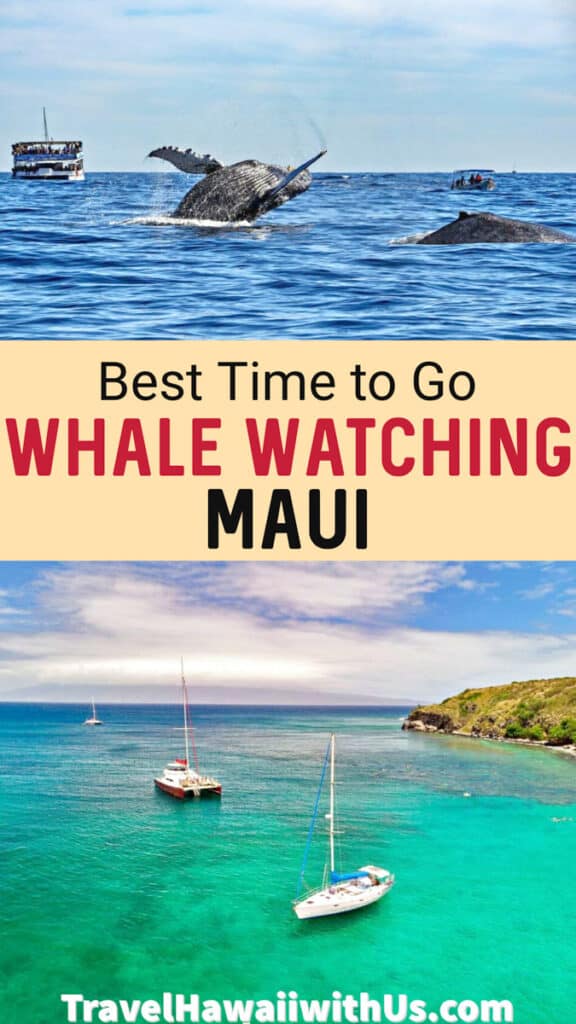
Disclaimer
All information provided on this blog is for informational purposes only and is subject to our terms and conditions of use. It is not a substitute for information or advice from official agencies or qualified professionals.
SV Travel Media LLC makes no representations or warranties regarding the accuracy or completeness of the information provided here, and readers should use their own discretion and judgement, and seek advice from professionals where needed.
Your use of the information described in, and your participation in activities presented on our website may carry the risk of illness, bodily injury, disability, death, or property damage. You freely assume all risks and dangers that may occur as a result of your access, use, purchase, or participation in any information, activity, product, or service listed on our website.

